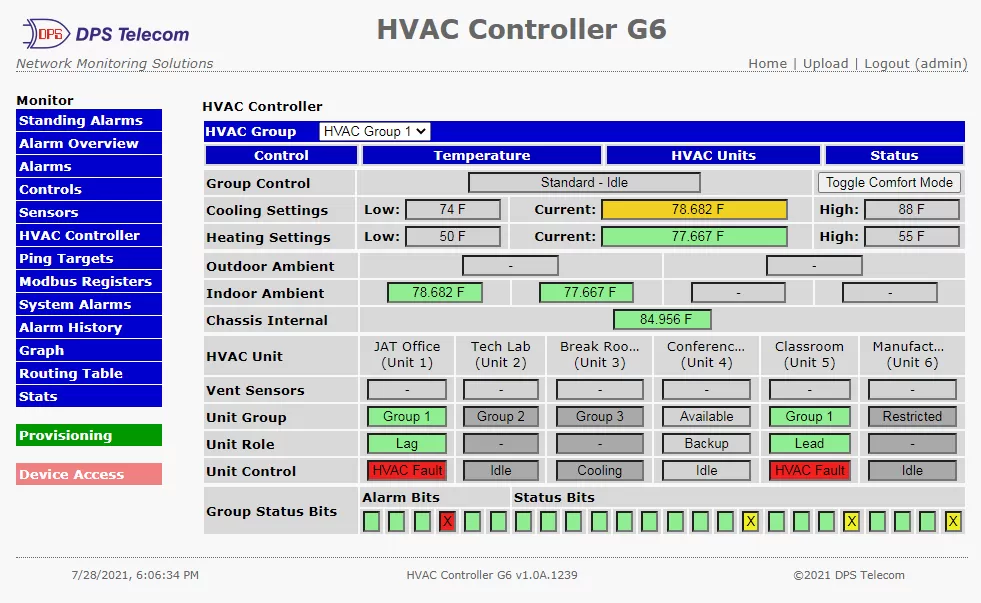Check out our White Paper Series!
A complete library of helpful advice and survival guides for every aspect of system monitoring and control.
1-800-693-0351
Have a specific question? Ask our team of expert engineers and get a specific answer!
Sign up for the next DPS Factory Training!

Whether you're new to our equipment or you've used it for years, DPS factory training is the best way to get more from your monitoring.
Reserve Your Seat TodayThere was perhaps a time when you could shrug off moderate inefficiencies in your HVAC setup. Perhaps you'd use a simple thermostat that offered "good enough" performance. Maybe you would run your lead HVAC into the ground without rotating the lag unit into the lead role. You can't do that in 2021...
Heating, Ventilation, and Air Conditioning (HVAC) control systems are tremendously important for your network management. As long as your telecom equipment runs on electricity, it's going to be generating heat. You might also live and work in a warm climate.
You need your HVAC units to optimally cool your site. The idea of your telecom hut, server room, or other facility triggering a thermal shutdown is totally unacceptable. You can even damage equipment if things get too hot.
Of course, efficiency is also a concern. Energy costs are going up. That's a trend that probably won't be reversing any time soon.
There was perhaps a time when you could shrug off moderate inefficiencies in your HVAC setup. Perhaps you'd use a simple thermostat that offered "good enough" performance. Maybe you would run your lead HVAC into the ground without rotating the lag unit into the lead role.
You can't do that in 2021. There are too many expenses. There are too many environmental concerns related to energy consumption.
Fortunately, for you, it's 2021. There are a wide range of building automation systems that will help you perfect your HVAC management.
What you need is a compact box (wall-mount, or sometimes rack-mount) that provides:

Perhaps one downside of our modern world in 2021 is that it's easier than ever for companies to bring a tech product to market. You end up with many products released by companies that have no business putting out a DDC system, HVAC module, or whatever they decide to call it.
When it comes to controlling your air conditioners for mission-critical remote telecom sites/huts, you need to find a manufacturer who has been doing this for a while.

Consider the long path that DPS took to end up with its modern HVAC Controller devices:
Can you see how this type of evolutionary development over nearly 30 years pays off, even for new products? With a seasoned manufacturer, you get an entire pedigree of bedrock advantages that form the base of any new product released.
Based on the full history of the NetGuardian RTU line, and the G3 HVAC Controller deployments across several years, the new G6 HVAC Controller is prepared to deliver a range of benefits for you:

This device will give you better reliability at your sites, reduce energy costs and environmental impact (your PR team will love the "green" angle), and make your job easier.
Building management systems (BMS) must always take temperature control into account. Your gear is sensitive and expensive, and you have to control it.
That's the part I already know about you, whether you work at a telco or a power utility or a railroad or a government agency.
What I don't know is "the last 10%" that will make this device perfect for you. What do you need from an HVAC control box? Keep in mind, the only reason the G6 device exists is because someone needed it. The only reason the earlier G3 model exists is because someone needed it.
Now it's your turn. What do you need from an HVAC Controller? Maybe it's as simple as a firmware tweak to meet a specific environmental initiative. Maybe you have HVAC systems that communicate with a protocol other than MODBUS. Maybe you want to mount on a DIN rail.
Whatever it will take to make the G6 HVAC Controller the right device for you, I want to know about it.
Give me a call (559-454-1600) or send me an email (sales@dpstele.com) and let's talk.

Andrew Erickson
Andrew Erickson is an Application Engineer at DPS Telecom, a manufacturer of semi-custom remote alarm monitoring systems based in Fresno, California. Andrew brings more than 19 years of experience building site monitoring solutions, developing intuitive user interfaces and documentation, and opt...